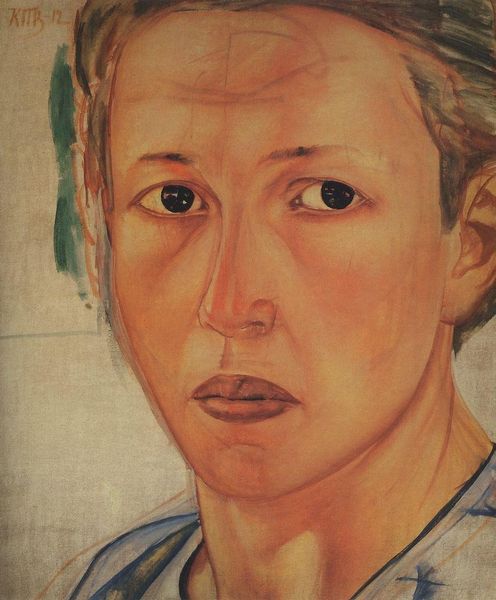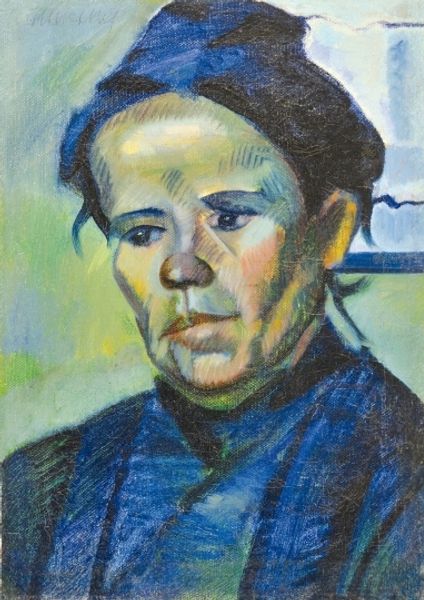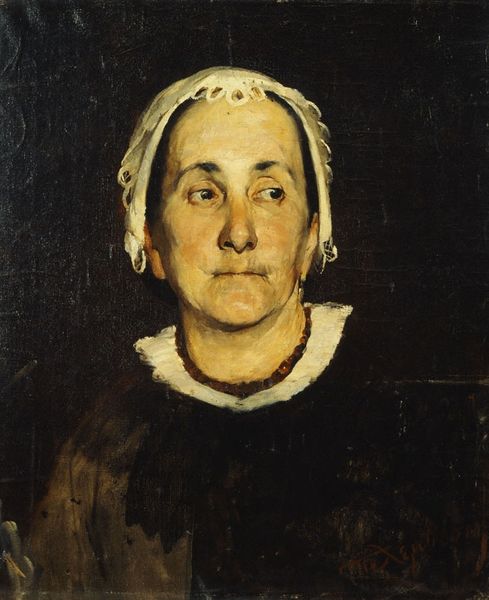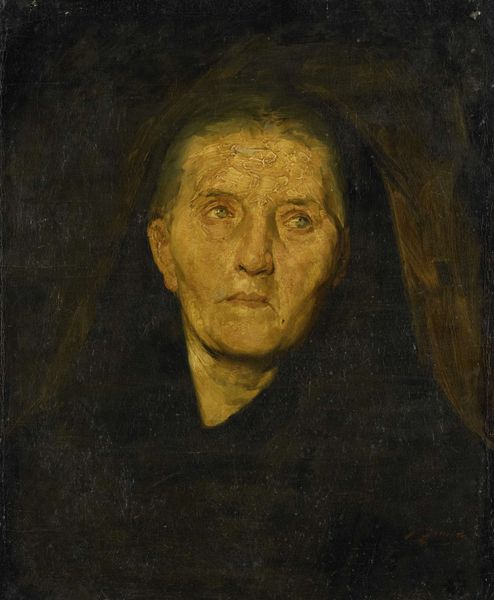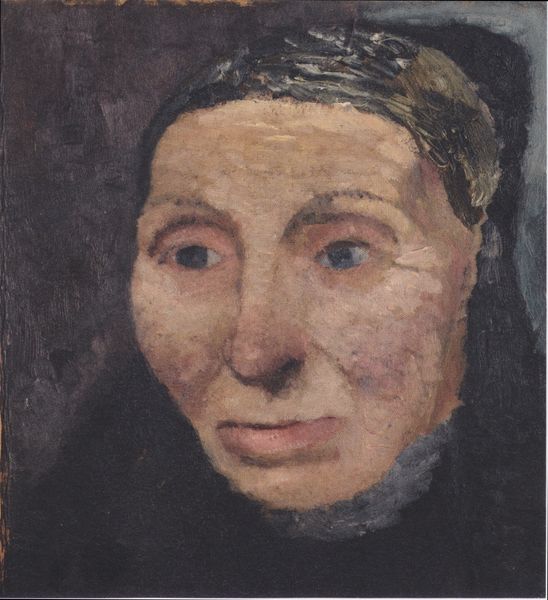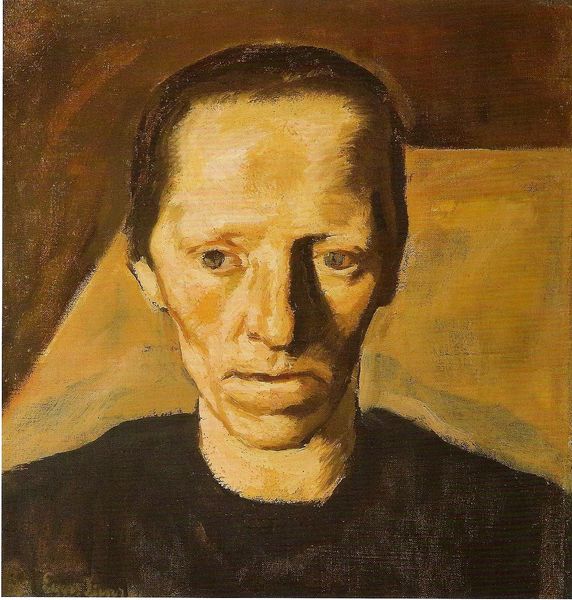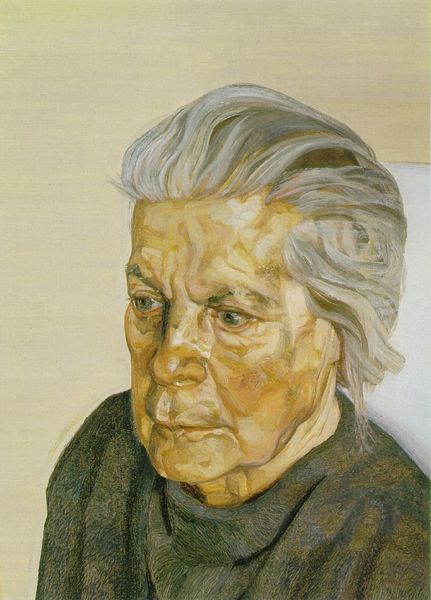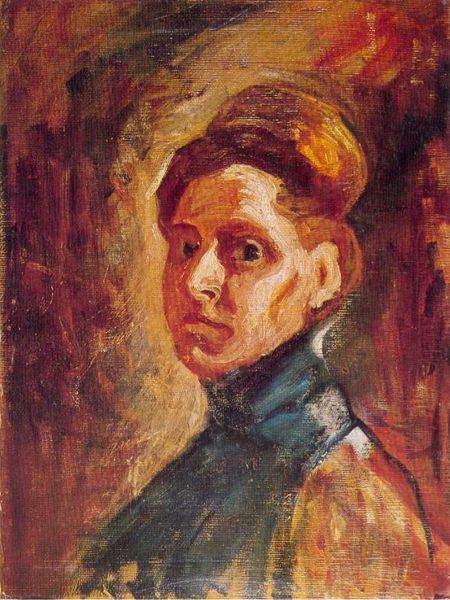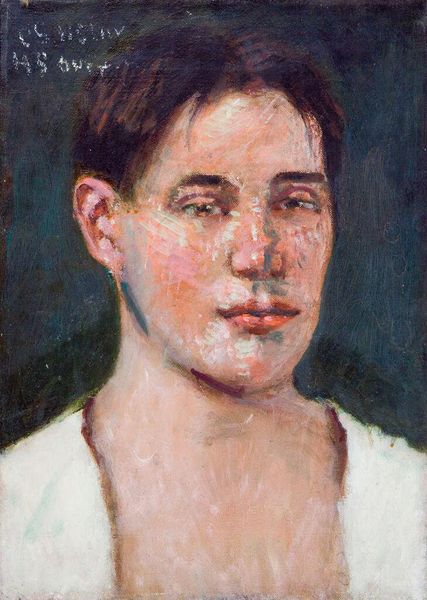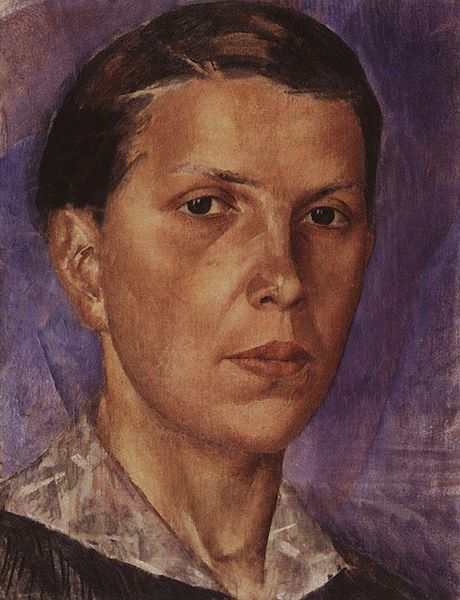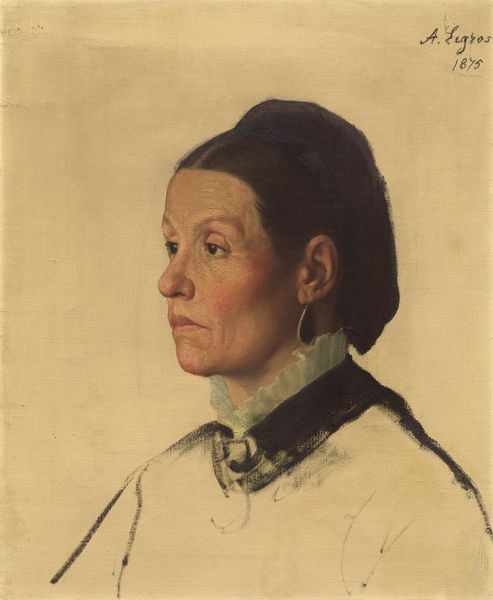
Copyright: Public domain
Curator: Painted in 1909, this is Kuzma Petrov-Vodkin's "Portrait of A.P. Petrovoy-Vodkin, artist's mother." Editor: There's a starkness here, almost ascetic. The palette is so muted, almost monochromatic. The rough texture of the canvas gives a sense of austerity and resilience. Curator: Absolutely. Vodkin's intimate realism speaks to the lived experiences of women in early 20th-century Russia, navigating patriarchal constraints. This piece acts as a quiet commentary on the roles women inhabited, particularly mothers, their social contributions often obscured. Editor: The oil paint, though thinly applied, gives incredible depth. See how the light catches the subtle textures in her face. It really does look like unvarnished truth—a focus on material existence, right down to the depiction of ageing, etched lines. It’s a very skilled handling of a very difficult and unforgiving medium, capturing the impact of manual labour in every detail. Curator: It's also worth looking into the Romantic and Realist styles visible here. The subdued palette serves to emphasize the rawness of lived reality for the subject, in contrast with Romanticized historical accounts that often marginalized such realities, as well as commenting on broader gendered themes prevalent in history. Editor: The work reflects the economic realities of peasant life through modest materials. I'm interested in how Vodkin represents social class using the tools he has to hand – oil and canvas. I wonder what specific labour processes and lived economic experience this represents. Curator: In engaging with her portrait, we aren't just witnessing an individual but confronting the intricate web of personal history and broader systemic imbalances. Her face bears witness to resilience—both hers and that of countless others like her, and, ultimately, is a crucial piece in decolonizing visual representation within art. Editor: Looking at it materially, it’s a stark piece. You are really getting insight into production and context – what can the manipulation of matter reveal about labor and circumstance? It speaks to the role art can have as an unmediated means of exploring those social and political concerns.
Comments
No comments
Be the first to comment and join the conversation on the ultimate creative platform.
